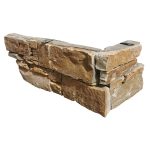Introduction

Cultured mica schist is a fascinating metamorphic rock that showcases the intricate interplay of minerals and geological processes. This unique rock formation has captured the attention of geologists, artists, and enthusiasts alike, owing to its striking appearance and rich history. In this comprehensive article, we will delve deep into the world of cultured mica schist, exploring its composition, formation, characteristics, and uses.
Formation and Composition of Cultured Mica Schist
Cultured mica schist is a metamorphic rock that originates from the transformation of pre-existing rocks under intense heat and pressure deep within the Earth's crust. The protolith, or parent rock, of mica schist is typically shale or mudstone, which undergoes metamorphism due to tectonic forces or intrusions of molten rock. The high temperatures and pressures lead to the recrystallization of minerals within the rock, resulting in the development of distinct foliation and mineral alignment characteristic of schist.
The key minerals that define cultured mica schist are mica, quartz, feldspar, and sometimes garnet or other accessory minerals. Mica, specifically muscovite or biotite, imparts the characteristic shiny appearance and foliation to the rock. Quartz, with its glassy texture, provides hardness and resistance to weathering, while feldspar adds color variations and additional structural support. The presence of garnet in some varieties of cultured mica schist lends a deep red hue and enhances the overall aesthetic appeal of the rock.
Characteristics of Cultured Mica Schist
Cultured mica schist is renowned for its distinct appearance, characterized by a shimmering sheen due to the presence of mica minerals. The foliation in mica schist is typically well-defined, with thin layers of mica interleaved with quartz and feldspar. This layered structure gives the rock a banded or striped appearance when viewed from certain angles, adding to its visual appeal.
In terms of color, cultured mica schist exhibits a wide range of hues, depending on the specific mineral composition and impurities present. Common colors include shades of gray, silver, brown, and green, with occasional splashes of red or pink in garnet-rich varieties. The interplay of light and mineral orientation in mica schist can create stunning visual effects, making it a popular choice for decorative purposes.
The texture of cultured mica schist can vary from fine-grained to coarse-grained, depending on the intensity of metamorphic processes and the size of mineral crystals. Fine-grained varieties are smooth to the touch and may exhibit a more uniform appearance, while coarse-grained specimens can display individual mineral grains and textures more prominently.
Roofing Slate For Sale of Cultured Mica Schist
Cultured mica schist is a versatile rock that finds numerous applications in various industries and creative endeavors. Its unique combination of minerals, colors, and textures makes it a sought-after material for both functional and aesthetic purposes. Some common uses of cultured mica schist include:
1. Building and Construction: Cultured mica schist is often used as a decorative stone in building facades, interior flooring, countertops, and wall cladding. Its distinctive appearance adds a touch of elegance and sophistication to architectural designs, making it a popular choice among designers and architects.
2. Sculpture and Art: Artists and sculptors appreciate the beauty and workability of cultured mica schist for creating intricate sculptures, carvings, and decorative pieces. The unique texture and color variations of mica schist lend themselves well to artistic expression, allowing for the creation of visually stunning artworks.
3. Jewelry and Ornamental Objects: Cultured mica schist is sometimes fashioned into jewelry pieces such as pendants, earrings, and beads. The shimmering quality of mica, combined with the durability of quartz and feldspar, makes it an attractive option for crafting stylish and eye-catching accessories.
4. Landscaping and Garden Design: Cultured mica schist can be used in landscaping projects to create pathways, garden borders, and decorative elements. Its natural beauty and weather-resistant properties make it a durable choice for outdoor applications, adding a touch of sophistication to gardens and outdoor spaces.
5. Geological Education and Research: Cultured mica schist serves as a valuable tool for geologists and researchers studying metamorphic processes and rock formations. By examining the mineral composition, texture, and structure of mica schist, scientists can gain insights into the geological history and environmental conditions that shaped the rock.
In addition to these practical uses, cultured mica schist holds cultural significance in various regions around the world. In some traditions, mica schist is believed to possess spiritual or healing properties, leading to its use in rituals, ceremonies, and talismans. The unique aesthetic qualities of mica schist have also inspired poets, writers, and artists to incorporate its imagery and symbolism into their works.
Conclusion
Cultured mica schist stands out as a captivating metamorphic rock that embodies the beauty and complexity of Earth's geological processes. From its origins deep within the Earth's crust to its diverse uses in art, architecture, and industry, mica schist continues to fascinate and inspire people around the world. Whether admired for its shimmering appearance, studied for its geological significance, or utilized for its practical applications, cultured mica schist remains a timeless and enduring symbol of nature's creative power.
